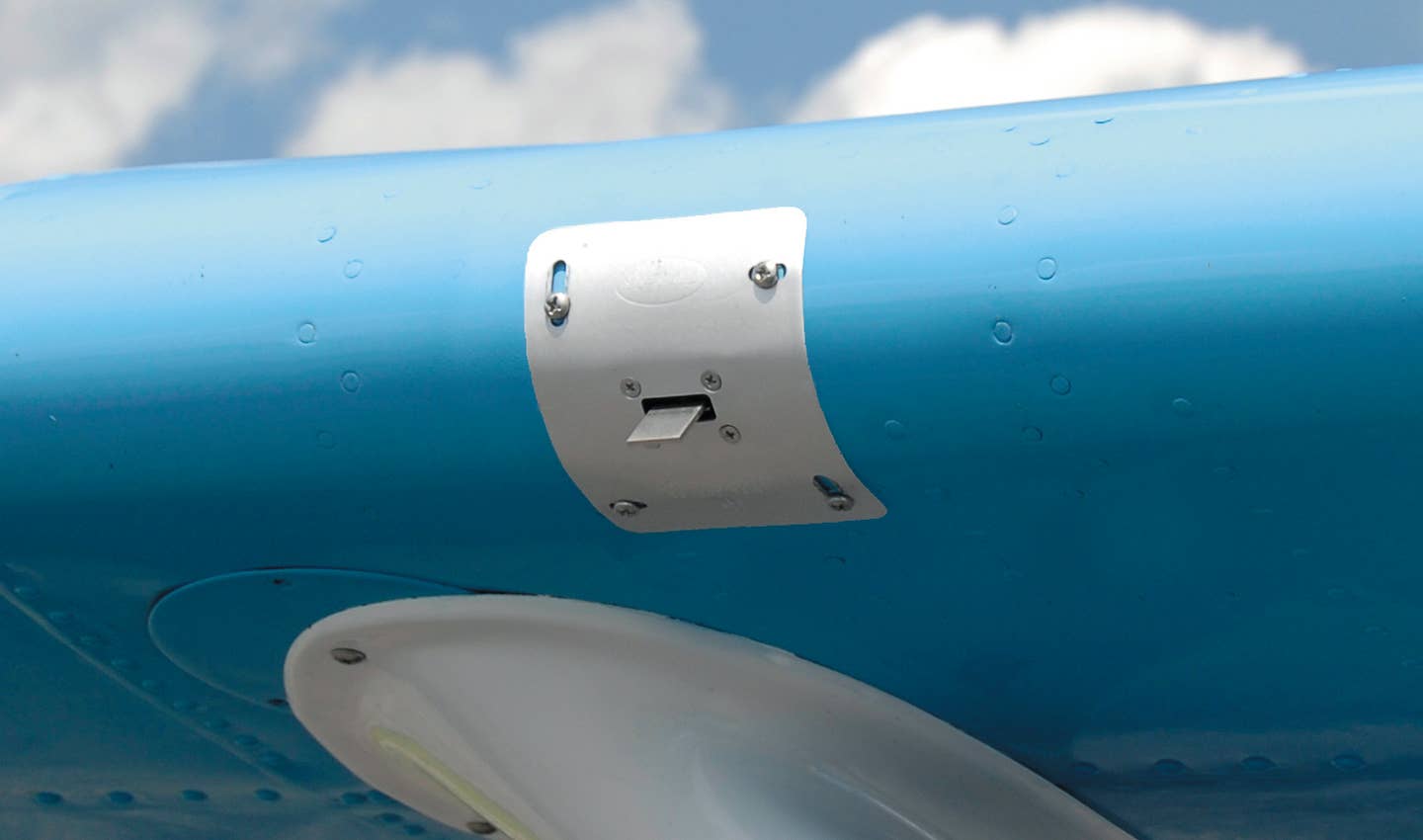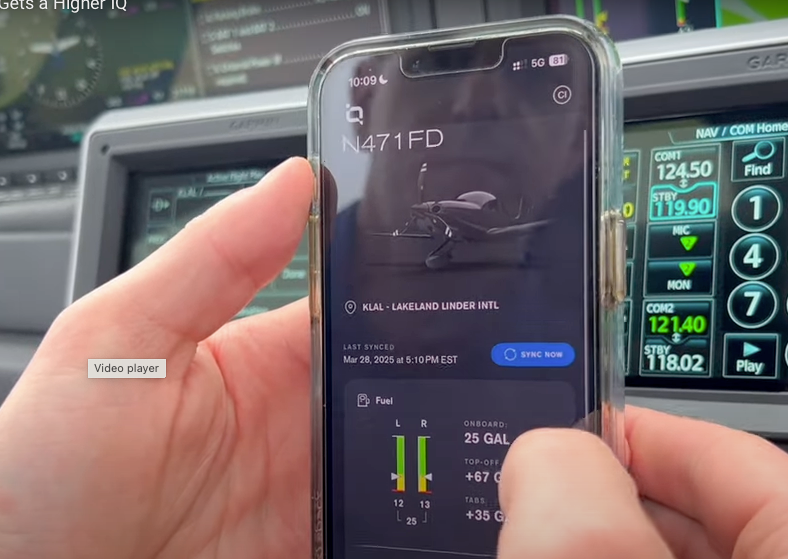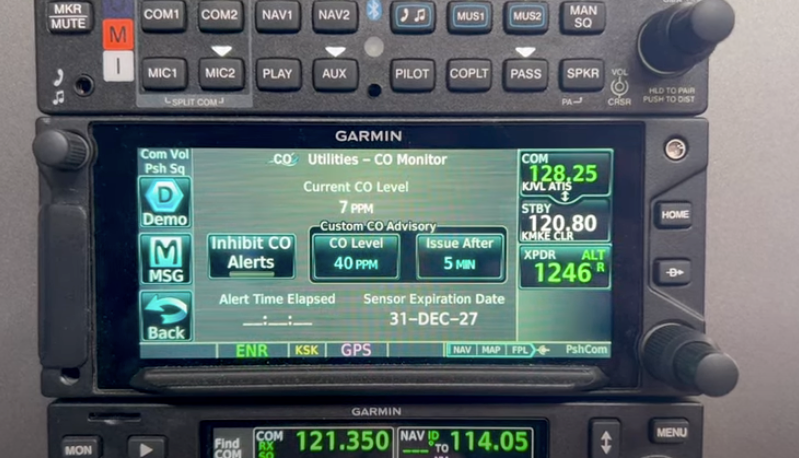Stall Warning Systems
Aerodynamic wing stall accidents have been a concern since the canard was removed around 1910. Approximately 40 percent of General Aviation fatal accidents are due to loss of control with…

Photo: Safe Flight Instrument
Corp.
Aerodynamic wing stall accidents have been a concern since the canard was removed around 1910. Approximately 40 percent of General Aviation fatal accidents are due to loss of control with the majority of those being from stalls. One element of stall awareness training that’s not often taught is the stall warning details of sensors used to detect an aerodynamic wing stall and then how those sensors are used in a system. Let’s fix that shortcoming.
Stalls
Stalls can happen at any airspeed, but only one angle of attack, the critical angle of attack. The airspeed changes with numerous variables including weight, load factor (bank/ G loading), center of gravity, air density, wing contamination (ice), etc. The wing’s angle of attack is the critical factor in determining how close the aircraft is to an aerodynamic stall. Therefore, an angle-of-attack (AoA) sensor is the ultimate stall warning and protection system.
Angle Of Attack Sensors
Angle-of-attack sensors can be as simple as the lift detector switch tab or the Cessna reed. Both of these devices work on the principle that as the angle of attack changes, the stagnation point on the wing changes. The stagnation point is where the wind separates into the flow above the wing and the flow below the wing. As the angle of attack is increased the stagnation point moves aft.
It’s easiest to visualize the lift detector switch tab. In cruise flight, the tab is pushed back/down by the relative wind going under the wing. As the angle of attack increases the stagnation point moves aft (or down) and as the angle of attack is increased further, the stagnation point moves behind the tab. With the stagnation point behind the tab, the airflow will push the tab forward/up. When the tab is forward, a microswitch closes and the stall warning is activated.
Leonard Greene invented the lift detector in the 1940s and modernized versions are still used today. Instead of simply detecting if the tab is forward or back a lift transducer incorporates a sensor to determine the force on the tab and its position. This provides a measurement of the angle of attack around the critical angle of attack (CL-Max).
The movement of the stagnation point is greatest near the stall. This makes a lift detector or lift transducer accurate and repeatable. Of course, the positioning of the lift detector or transducer on the wing is critical. If the lift transducer is part of the certified stall warning system, the positioning is determined during flight test.
AoA Vanes
Larger aircraft typically use an angle-of-attack vane on the fuselage. An angle-of-attack vane is basically a weather vane. The AoA vane protrudes into the airstream to align with the local airflow. While basically a weather vane, the internal design is much more complicated. The external vane is counterbalanced to improve low-speed sensitivity and is damped to eliminate any jitter or flutter. The external vane itself is heated for use in icing conditions.
Airflow studies using computer-aided design tools are used to determine the best position for mounting the AoA vane on the aircraft. After mounting, flight testing will be done to determine the local angle of attack that produces CL-Max. The actual free airstream differs from the local airstream due to the effect of the fuselage/radome and wing faring. Depending on the aircraft, the free airstream airflow will start to be affected by the airframe several feet in front of the aircraft. However, the AoA measured by the vane is the local AoA. The local AoA on the nose of the aircraft is typically two times more sensitive than the free airstream AoA. The vane angle at the stall is recorded for each flap position while the aircraft is in flight-test status.
AoA From Differential Pressure
The SmartProbe from UTC Aerospace uses differential pressure to determine the angle of attack. AoA ports are added to a pitot/static probe to become an integrated air data probe. In cruise flight the pressure on the top of the tube will be close to the pressure on the bottom of the tube. Small ports (holes) are made in the tube to route the air pressure back to a computer to measure the pressure difference and calculate the angle of attack. As the angle of attack is increased, the underside of the tube will have a higher pressure than the top. Again, through flight testing CL-Max will be determined and the differential pressure at the stall will be measured.
Lower-cost differential-pressure angle-of-attack systems are available from Alpha Systems, Garmin, and others.
Calculated AoA
It’s possible to calculate AoA based on inertial data. Aspen Avionics uses such a derived AoA. Adding AoA to Aspen’s Evolution display does not require any additional sensors. In November 2017 the FAA published a paper titled “Flight Test Results of Direct Measure and Derived Angle-of-Attack Systems for General Aviation Airplanes.” The paper features Garmin’s “sensed AoA” and Aspen’s “derived AoA.”
Stall Warning System
Regulatory requirements for a stall warning system specify that it provide a clear and distinctive stall warning and provide sufficient margin to prevent inadvertent stalling. During wings level, decelerating flight the stall warning system for a light aircraft must begin at least five knots above the stall speed. During a turn, the stall warning must begin sufficiently in advance of the stall to allow the pilot to take appropriate action to prevent the stall. A robust pre-stall buffet can be adequate to satisfy the certification requirements. However, most aircraft require an “artificial” stall warning system to meet certification requirements.
Because of the unique characteristics of angle of attack, all “artificial” stall warning systems will utilize AoA as the primary input. The stall warning system for a light aircraft can be as simple as we’ve discussed. Some Part 23 business jets have a single AoA sensor vane, where more sophisticated stall warning systems will utilize two independent stall warning computers and two AoA sensor vanes.
Stall warning systems beyond the most basic will include flap position (CL-Max, the critical AoA, changes with flap position) and an input to adjust the warning for ice accretion. This can be from an ice detector or the anti-ice system being turned on. Landing gear position is incorporated in some systems and Mach compensation is used in most jet stall warning systems. Weight on wheels logic is usually used to disable the stall warning system on the ground.
How are dual stall warning systems better than a single system? First, there is redundancy. One side can fail and you still have stall warning on the opposite side. If either system calculates that a stall is imminent then that side will issue the warning. In a yaw, one system will indicate a higher angle of attack than the other. The higher AoA wins and a stall warning is issued.
Traditionally in air transport aircraft, the stall warning is done with a stick shaker. This device vibrates or shakes the yoke to simulate the feeling of a stall buffet. It is very noisy and the combination of the shaking and noise usually wakes up any pilot. Light aircraft use a stall warning horn while some of the later systems have a voice call out of “Stall.” Early Piper Cherokees had a red annunciator light to indicate a stall, but that is no longer deemed adequate for new aircraft certifications.
What Do You Fly?
We’ve covered the basics of a stall warning system, but you should dig into the details of the system on your aircraft.
- Is a preflight check required?
- Is there redundancy? If so, can you go with only one operational?
- Is it usable in icing conditions? If so, is there an “advancement” of the stall warning to account for aerodynamic changes with ice? (Many older stall warning systems were certified before this requirement.)
- If it is a later system, what activates the advancement of the stall warning for icing conditions?
This Is Important
You might routinely dismiss the stall warning system as insignificant. However, being a simple and reliable system doesn’t make it insignificant. There was a fatal Phenom 100 stall accident on December 8, 2014, in Gaithersburg Maryland that illustrates this point.
The Embraer Phenom 100 stall warning and protection system has an “ice schedule” that adjusts parameters when deicing equipment is turned on. From the NTSB’s report: CVDR data show that, before beginning the descent, the pilot set the landing reference speed (VREF) at 92 knots, indicating that he used performance data for operation with the wing and horizontal stabilizer deice system turned off and an airplane landing weight less than the airplane’s actual weight. Using the appropriate Normal Icing Conditions checklist and accurate airplane weight, the pilot should have flown the approach at 126 knots (a VREF of 121 knots +5 knots) to account for the icing conditions.
The NTSB found that the pilot’s failure to use the deice system during the approach led to ice accumulation, an aerodynamic stall at a higher airspeed than would occur without ice accumulation, and the occurrence of the stall before the aural stall warning sounded or the stick pusher activated. Because the deice system was not activated by the pilot, the band indications (low-speed awareness) on the airspeed display did not appropriately indicate the stall warning speed. The NTSB’s aircraft performance study found that there would have been sufficient warning of a stall had the deice system been used during the approach. Once the airplane stalled, its altitude was too low to recover.
Stall Protection
Stall protection systems carry the stall warning system to another level. Stall protection systems use a pusher to force the yoke forward to prevent a stall. They came about early in the jet era. Most of the swept-wing air-transport aircraft of that era had poor stall recovery characteristics. Because of that, the FAA required a system to prevent a stall from happening in the first place.
Most “pusher systems” are still in Part 25 Air Transport aircraft, but there a few in Part 23 aircraft. If the aircraft designer and the regulatory authorities feel the stall characteristics are marginal then a stick pusher will be installed. Preventing a deep stall situation where the wing blanks out the elevator in a T-tail aircraft would be a more serious case requiring a pusher.
The force for the push used to come from a separate servo motor. However today, more manufacturers are using the autopilot pitch servo to accomplish the push. When the AoA reaches a predetermined value the push will occur.
It’s called a pusher but in the implementation, it’s actually a pull. Either an independent motor or the autopilot servo will pull on a cable to move the yoke forward. If CL-Max is normalized to 1.0, the stick pusher will typically fire around 0.97 and remain in a push state until the system senses that the stall warning trip point has been passed. The actual “firing point” will be determined during flight test.
A pusher system requires a higher level of safety to prevent an accidental push. You can understand the consequences of an inadvertent push in cruise flight. A stall protection system will normally utilize at least two independent computers with two or more independent AoA sensors. Both computers must have issued stall warnings and both have to agree to push. Typically, the pilot would be required to test the operation before every flight. It is better to have a stall protection system that fails safe—no push— than one that pushes inadvertently.
Flying AoA
While AoA is the primary input to a stall warning system, it is also a very useful instrument in the cockpit or heads-up display. Naval aviators are taught to fly angle of attack. In low-speed, high-lift situations the AoA will be more sensitive than the airspeed indicator. Instead of just giving you a warning approaching a stall, the AoA indicator can provide information on how close or far away you are from the stall.
AoA indicators can range from glareshield-mounted bar graph displays to three light fast/slow displays, to analog round-dial instruments. A normalized AoA indicator will typically be calibrated to 1.0 at CL-Max or stall, and 0.0 as zero lift. Approach speed is typically 1.3 VS which equates to a normalized AoA of 0.6.
Turbine aircraft operators calculate their VREF speed based on the aircraft weight. Knowledgeable pilots will cross check the AoA on approach to assure that an incorrect weight was not used in the calculation. (It happens.) Light aircraft operators can use glareshield-mounted bar graph displays to aid them in maintaining the proper approach speed while keeping one’s eyes outside. Adjusting the pitch and then trimming to hold the center donut or reference point will lead to more consistent stabilized approaches and better landings.
Bob Teter worked as a flight-test engineer on business-jet automated flight-control and navigation systems. Bob worked for several avionics companies and retired from Safe Flight Instrument Corporation.
For more great content like this, subscribe to IFR!






